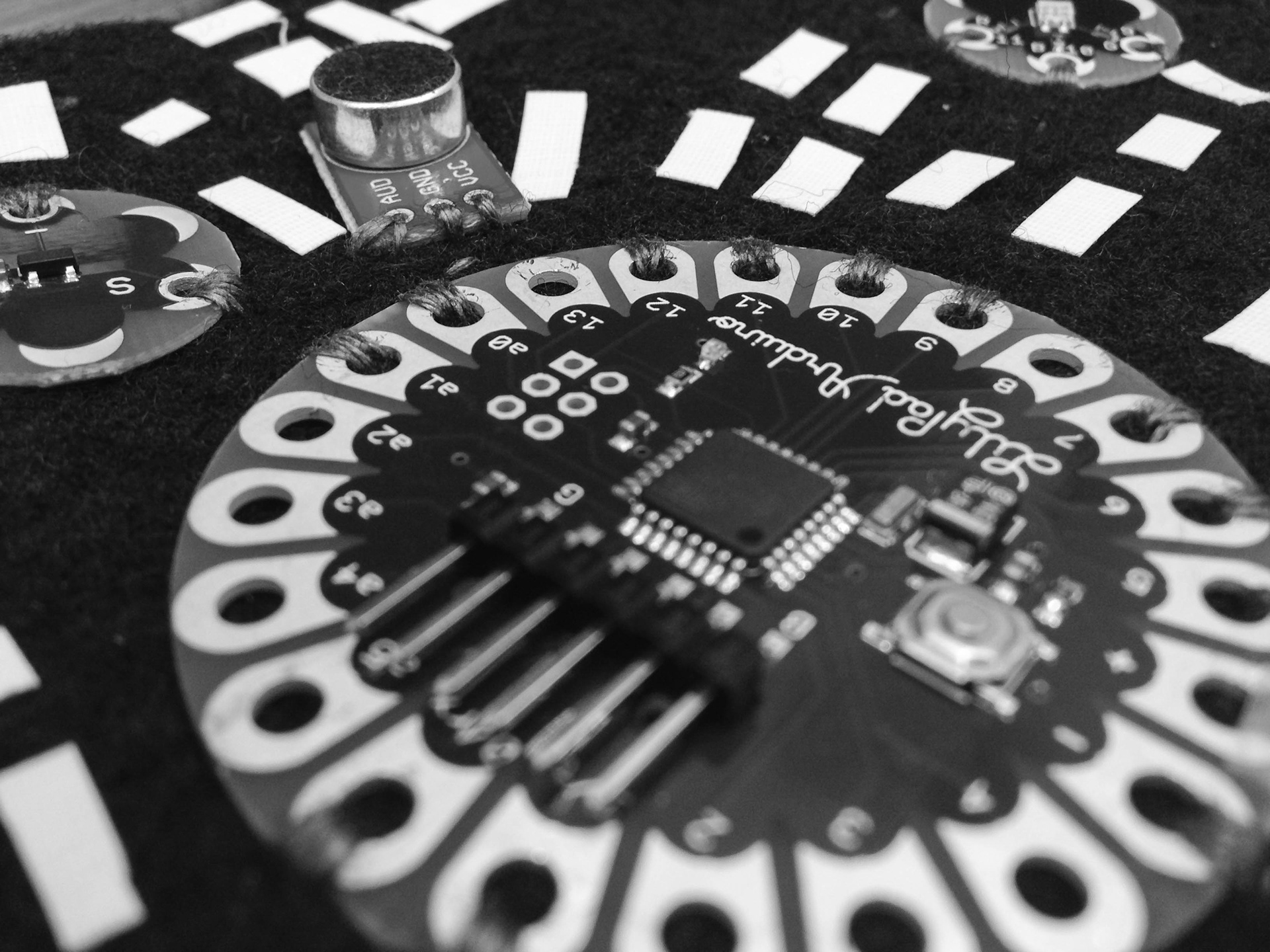

Responsibilities: UX research, interaction design, wearable device (a B2B solution) design and development, patent writing
Research & Design Process
1. Identified the problem in health and safety of a work environment with a high impact and target audience as field workers who perform manual tasks at a hazardous environment
2. Secondary research, competitive analysis, self-learned sensing/wearable technology
3. Built a partnership/relationship with internal teams of field workers
4. Visited field workers' work environment and discussed potential design solutions with them
5. Designed, wireframed, and prototyped a wearable design solution
6. Developed the wearable design solution using LilyPad Arduino
7. Discussed with the legal office to make sure the study posted no harm to the users
8. User evaluation with behavior change measurements, usability testing, and interviews
9. Analyzed user data and delivered research report
10. Wrote a patent based on the research project and the wearable design
Patent Granted in 2018
The patent based on this study is granted on Jan.2, 2018: McCleary, D. W., Rosato, S.M., Uchidiuno, J. O., Wang, X., & Weisz, J. D. (2018). Detecting and notifying of various potential hazards. U.S.Patent #9858794B2, filled 2015, granted 2018.
Problem
Although the Occupational Safety and Health Administration (OSHA) provides a health and safety guideline for different kinds of field work in an adverse environment and companies reinforce the guideline, it depends on individual worker to ensure that they follow the guideline.
Despite the signage reminding field workers to drink water, take work breaks, or put on hearing protections, they often neglect or forget those actions when they are used to the work environment or when they believe they would only be in the adverse environment for a short time.
For example, boiler room mechanics are exposed to high temperature and high noise work environments. Their work includes cleaning and repairing the boiler room equipment. Sometimes, they need to handle heavy and hots parts. They may become dehydrated without realizing it if they do not take regular breaks.
For those technicians who work in a high-noise data center, they may forget to put on the hearing protections after getting used to that work environment.
Target Audience
Field workers who manually perform maintenance tasks in either high-temperature and/or high-noise work environments
Field Visits & Participatory Design
To understand the work environment of field workers and explore what design could be appropriate for them, I visited the workspaces of boiler room mechanics and data center technicians and discussed potential design solutions with them.
From the field visits and design sessions with the field workers, I learned that:
1. For boiler room mechanics who work in high-temperature environments, exposure to high temperatures can cause exhaustion and dehydration. However, they often want to get the work done as fast as possible without taking proper breaks.
"If I’m working on top of the boiler, it’s very hot. I want to get the job done. So even if I’m hot, I’d rather get the job done before coming down." (boiler room mechanic Rick)
2. For data center technicians who work in a high-noise environment, they often forget to put on a hearing protection as they are used to that environment. Sometimes, they consider putting on a hearing protection as inconvenient.
"A lot of times when I come in… you go right to the desk. And you start working whatever. It all says you have to do something, and you don’t always pop up and take the actions really quick. And you go do it, and you don’t grab these [refers to hearing protections], and you go out there. You forget, and you come back." (data center technician John)
3. High temperatures or high noise levels change thorough the day. Not every location in the adverse work environment shares the same degree of temperature or noise level.
4. Both boiler room mechanics and data center technicians need to move a lot during their shifts. For example, the mechanics need to climb up and down to handle the equipment, while data technicians need to work to different machines to do inspection check or adjustment.
They do not carry any personal device (e.g., smartphone) with them while they move around their workspaces. Besides, there are lots of other equipment and cables in the work environments that they need to take care of. They want a solution that does not interfere their manual inspection tasks.
Design Insights
Based on the above findings from the field visits and design sessions with the field workers, I came up with the following design insights:
1. Remind field workers to take regular breaks and drink water. Increase their awareness of ambient temperature levels
2. Remind field workers to wear hearing protections. Increase their awareness on the ambient noise levels of their work environment
3. Real-time sensing to capture ambient temperatures and noise levels
4. Wearable solution on the body that does not get in the way when field workers are performing manual tasks, and does not tangle with the other equipment or cables to avoid cause field workers tripped and fall
SafeSense Design
Based on the design insights, I designed, developed, and built a wearable armband with the following key features to promote health and safety at the work environment. This device senses the surrounding temperatures and noise levels in real time, and alerts users when the temperature or noise level exceeds the OSHA health and safety guideline.
1. Visual feedback and tactile feedback to remind field workers to take work breaks and drink water in a high-temperature environment
2. Visual feedback and tactile feedback to remind field workers to put on a hearing protection in a high-noise environment
3. Real-time and continuous sensing of ambient temperatures and noise levels
4. Wireless wearable device on the arm, a location that does not interfere their manual tasks; making it wireless so it does not tangle with other equipment or cables in the work environments
Design & Building Process
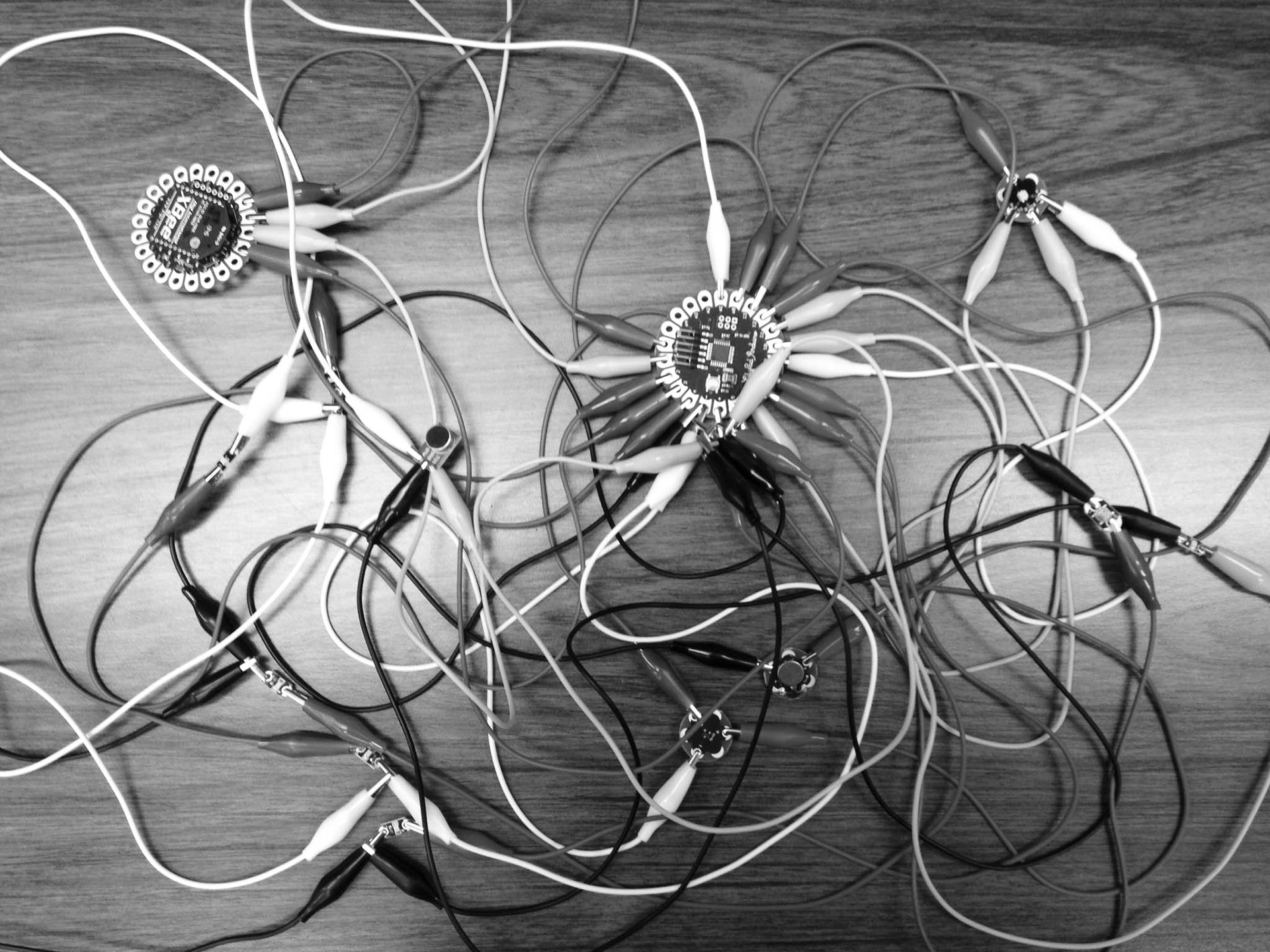
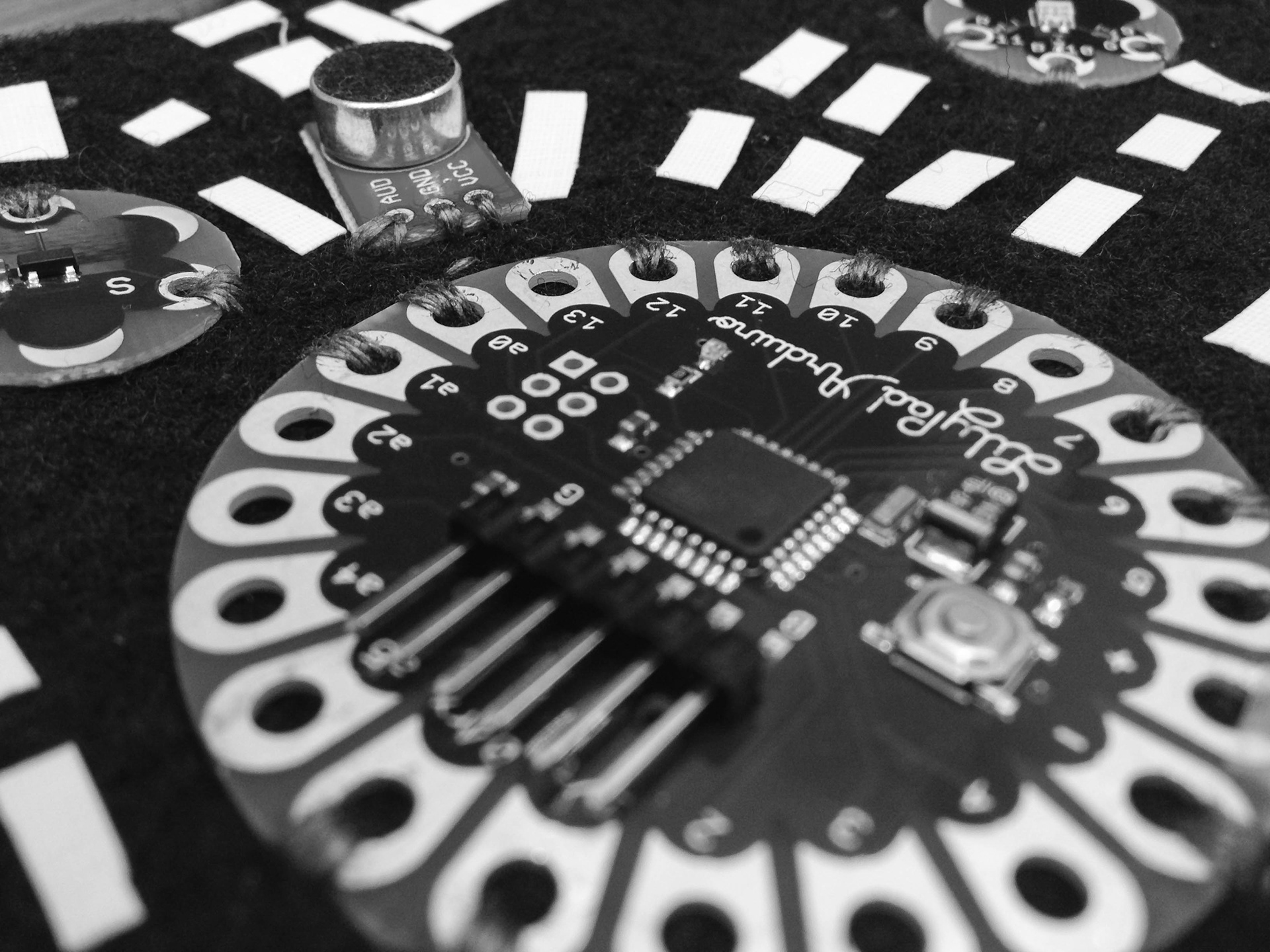
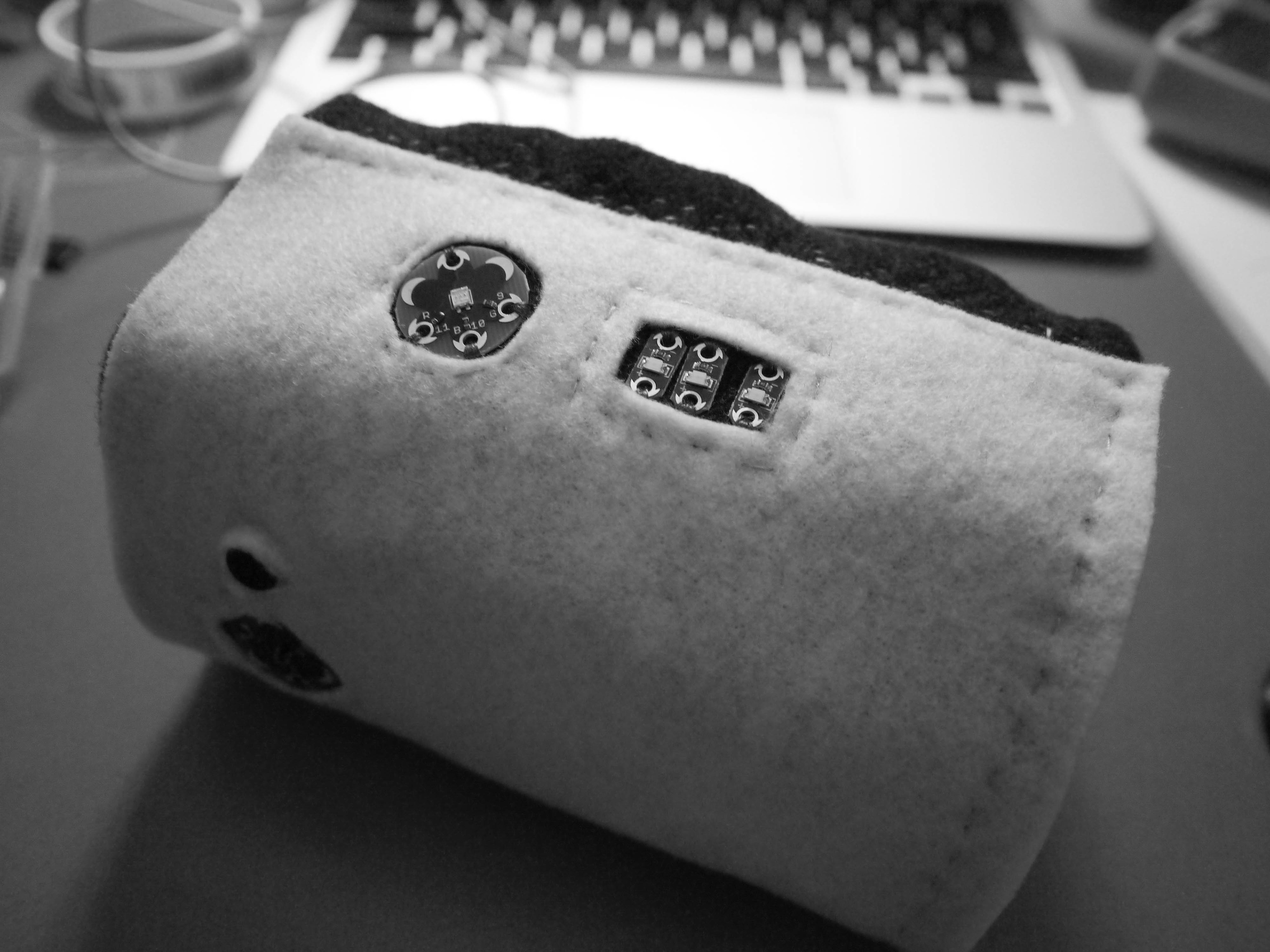
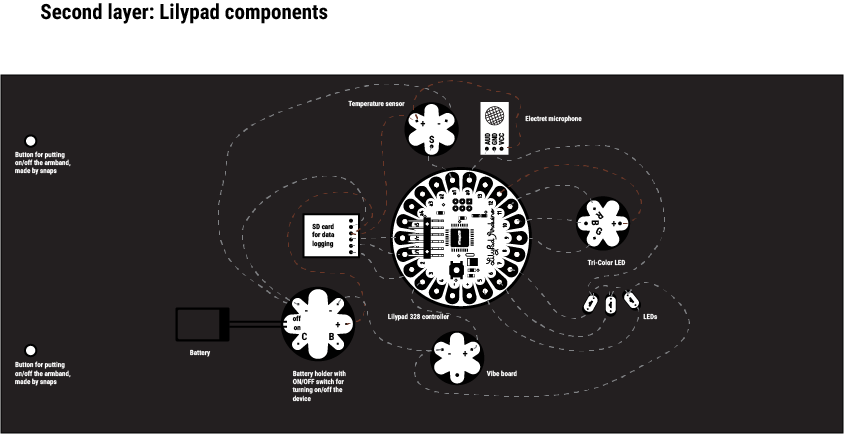
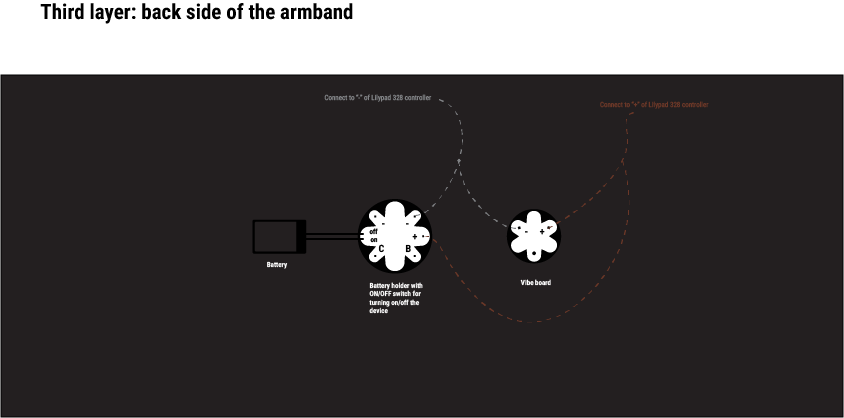
User Evaluation
To understand the user experience and the influence of SafeSense on field workers' health and safety behavior at their work environment, I conducted a user study with 20 field workers the following three components:
1. Pre- and post-surveys to measure health and safety behavior change and effectiveness of design features on promoting health and safety behavior
2. Field workers put on SafeSense during their work shift
3. Follow-up semi-structured interviews to understand their feedback to SafeSense, and reasons why or why not SafeSense could motivate them to drink water, take regular breaks, or put on hearing protections
Main Takeaway
SafeSense successfully increases field workers' awareness of the ambient temperature and noise levels. Among the participants, 95% of them took a break and put on hearing protections when they received the reminder from SafeSense. They rated SafeSense as being useful to them (M=4.3, SD=.7) for the reminder of health and safety behavior.
Tactile feedback (vibration) is better to motivate health and safety behavior change, because it is easy for field workers to feel the vibration while visual feedback (LED lights) needs their consistent attention.
"I was happening to plug cables. You really can’t always look when, what the LED’s flashing, because it depends." (data center technician Tim)
"There was a couple of times when I had my hands on the table, and I couldn’t see it. But when it vibrated, you know it vibrated. So your hand could be in the position that you may not see the light." (data center technician Rob)